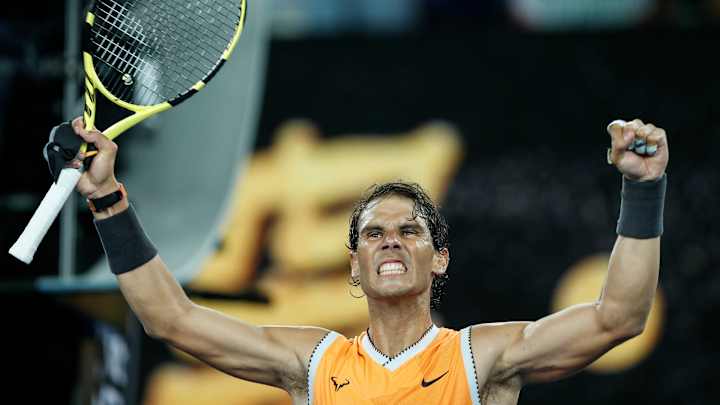Nadal's TED Talk, Collins' Cinderella Run Highlight Day Nine of the Australian Open

MELBOURNE — Here are five thoughts on Day Nine of the Australian Open, which saw American Danielle Collins continue her Cinderella run and a dominant Rafael Nadal give young American Frances Tiafoe a lesson.
• Last night we saw Serena Williams, in her first tournament since the 2018 U.S. Open, offering a master class. Tonight it was Rafael Nadal. In his first tournament since last year’s U.S. Open, he gave the tennis equivalent of a TED talk. Yet to drop a set this tournament, Nadal ran roughshod over Maryland’s Frances Tiafoe, 6-3, 6-4, 6-2. It was a great event for Tiafoe, but this was one-way traffic, as the Aussies say. Nadal has reminded us that when his body cooperates, he is a sui generis player. (How do you find a practice partner to simulate his game?) He has played 15 sets this event; he has won 15 sets. And he won’t have to play a top-10 opponent to reach the finals, because next up for him is…
• We are watching the emergence of Stefanos Tsitsipas in real time. The Greek demigod beat Roger Federer in the fourth round, marking a significant milestone. But returning in 48 hours to outlast a steady veteran—Spain’s Roberto Baustista Agut, in this case—marks a signifier of another kind. Fans noted that after Mark Philippoussis outslugged Pete Sampras at the 1996 Australian Open, he then fell to Mark Woodforde. When Federer beat Sampras at Wimbledon in 2001, the changing-of-the-guard narrative fell flat when he lost his next match to Tim Henman. Here, Tsitsipas was visibly tired but lifted his game deep in three of the four sets and prevailed, 7-5, 4-6, 6-4, 7-6. Nadal is next.
WERTHEIM: In Andy Murray, Tennis to Lose One of Its Grand Sportsmen
• Coming into this event, Danielle Collins managed to crack the top 40 without winning a single singles matches at a Grand Slam. In the past nine days, she has won five. The most recent came this afternoon, a three-set grinder of a win against Anastasia Pavlyuchenkova, 2-6, 7-5, 6-1. And suddenly the two-time NCAA champ from UVA is in a Grand Slam semifinal, a guaranteed $650,000 wealthier and destined for the top 20. Collins has gotten a lot of attention for her —how to put this?—abundance of confidence. Some of you will claim it footfaults into “cocky.” The view here: good for her. For all the players—male and female—who have the tools but lack self-belief, here’s a player who genuinely thinks she’s should be winning every match. A year ago she was outside the top 100, playing a Challenger in Newport. Now, she in the final four of a major.
• There will be no Australian singles champion this year. Australia’s Ashleigh Barty went down surprisingly meekly to Petra Kvitova this evening. They played just 10 days ago in the final of the Sydney event and Kvitova won, 7-6 in the third set. Tonight it was 6-1, 6-4, Barty was unable to mount an attack against a (pardon the redundancy) tricky lefty. Kvitova is outspoken about her disdain for heat and humidity. The climate has been mild here. Related: she has not.
• Like a feuding brother and sister in the backseat, there’s a lingering (and ultimately silly) squabbling in tennis over which tour is superior, who deserves more of the adults’ attention, who has more growth potential, who’s covering for whom. Here’s we are as I write this: Serena Williams, Rafael Nadal and Novak Djokovic remain. The great breakthrough: male (Stefanos Tsitsipas). The last great Aussie hope: female (Ashleigh Barty). Only one male quarterfinalist from 2018 remains; only two female quarterfinalists from 2018 remain. The men have given us a great story in Tiafoe; the women in Collins. Trite as it sounds, 1+1 really equals three in this sport. Kids: behave, or we’ll turn around. Spend more time growing the pie and less time worrying about how to divide it.
